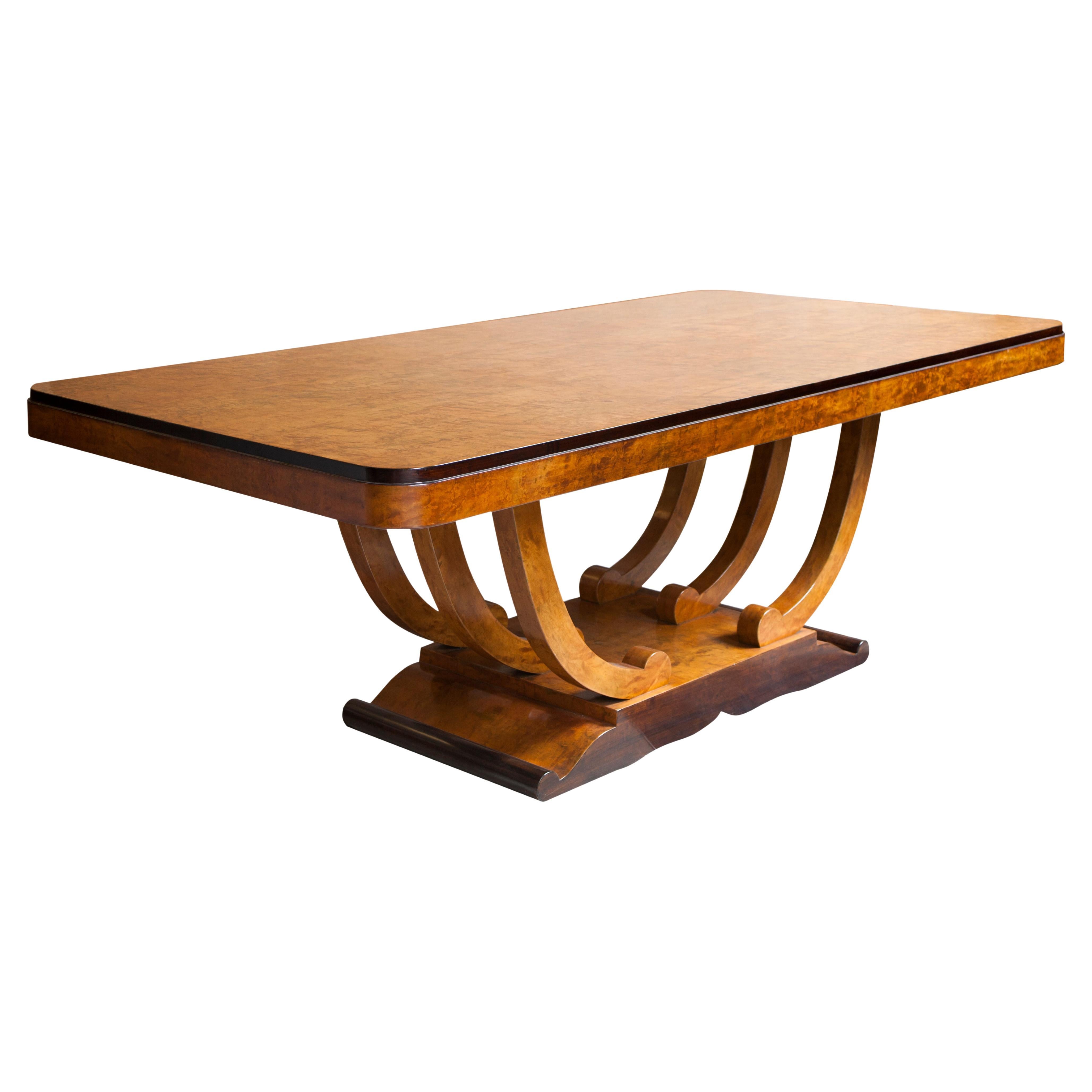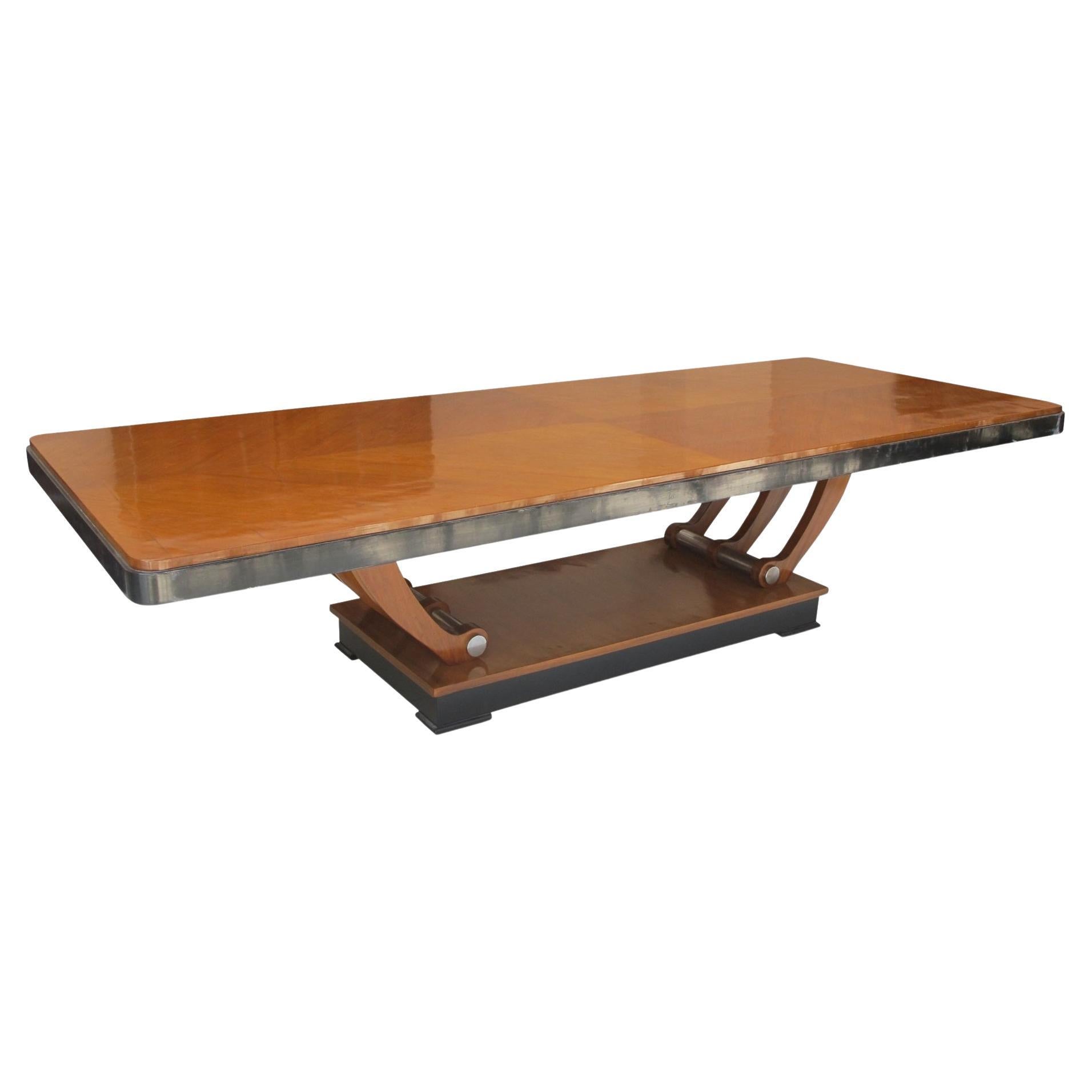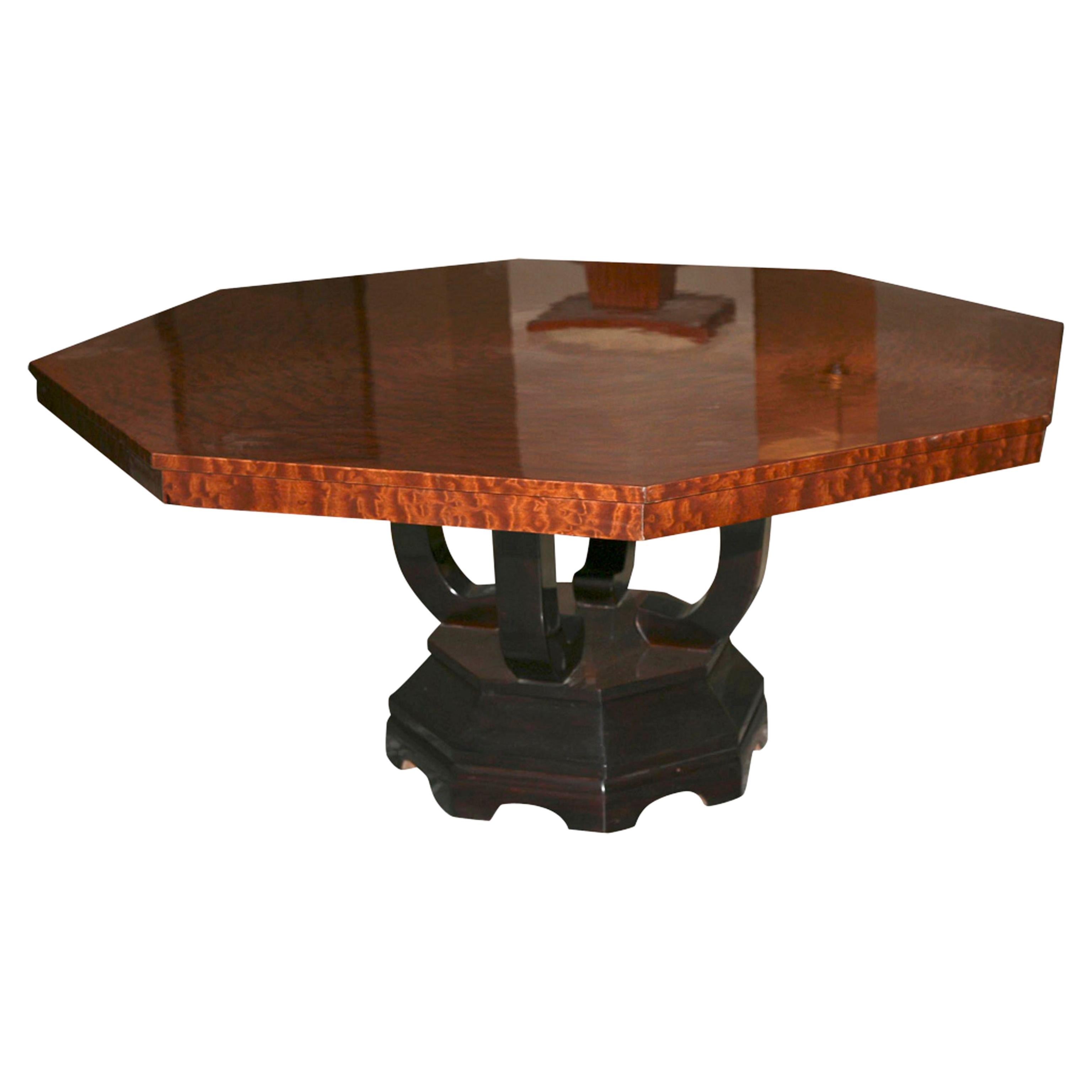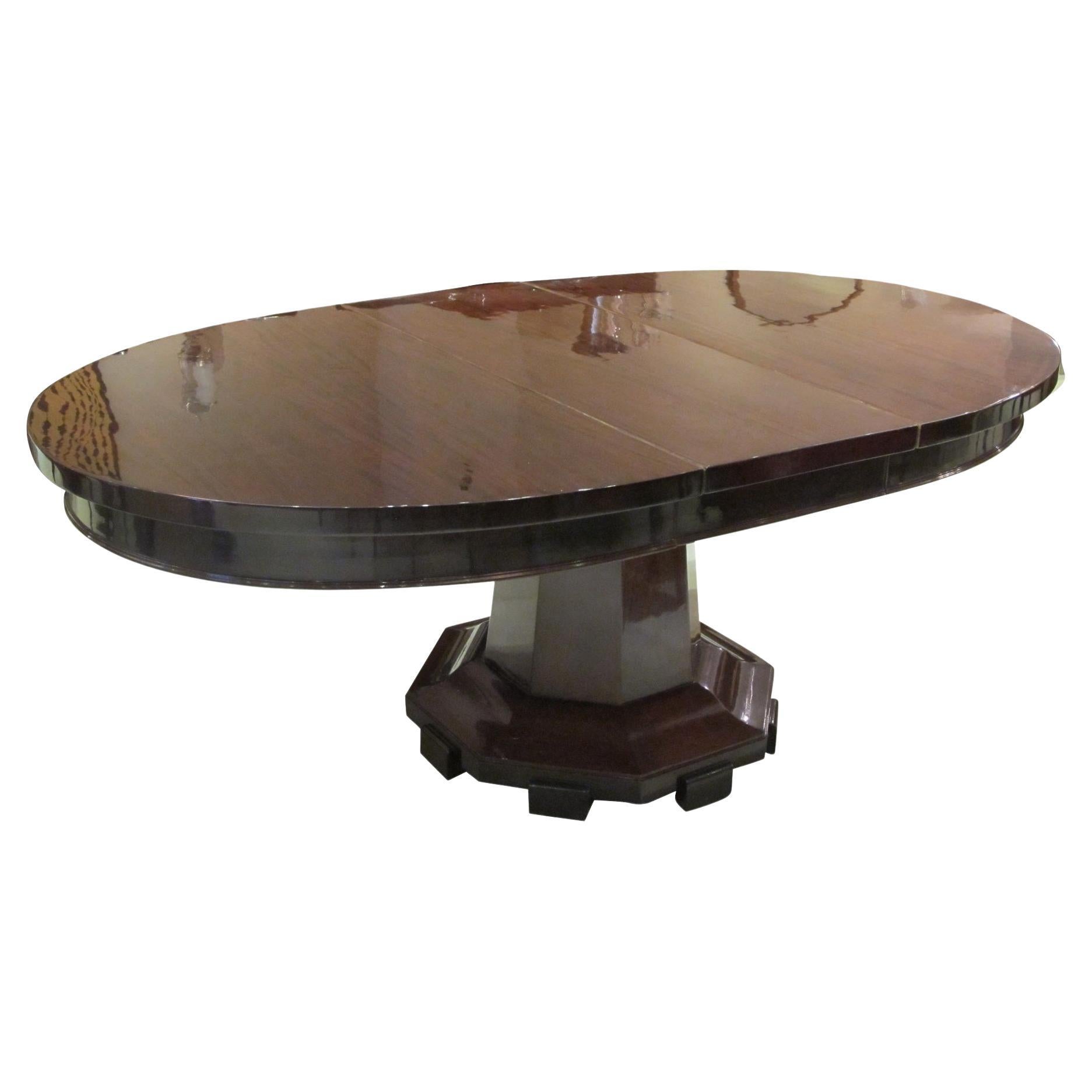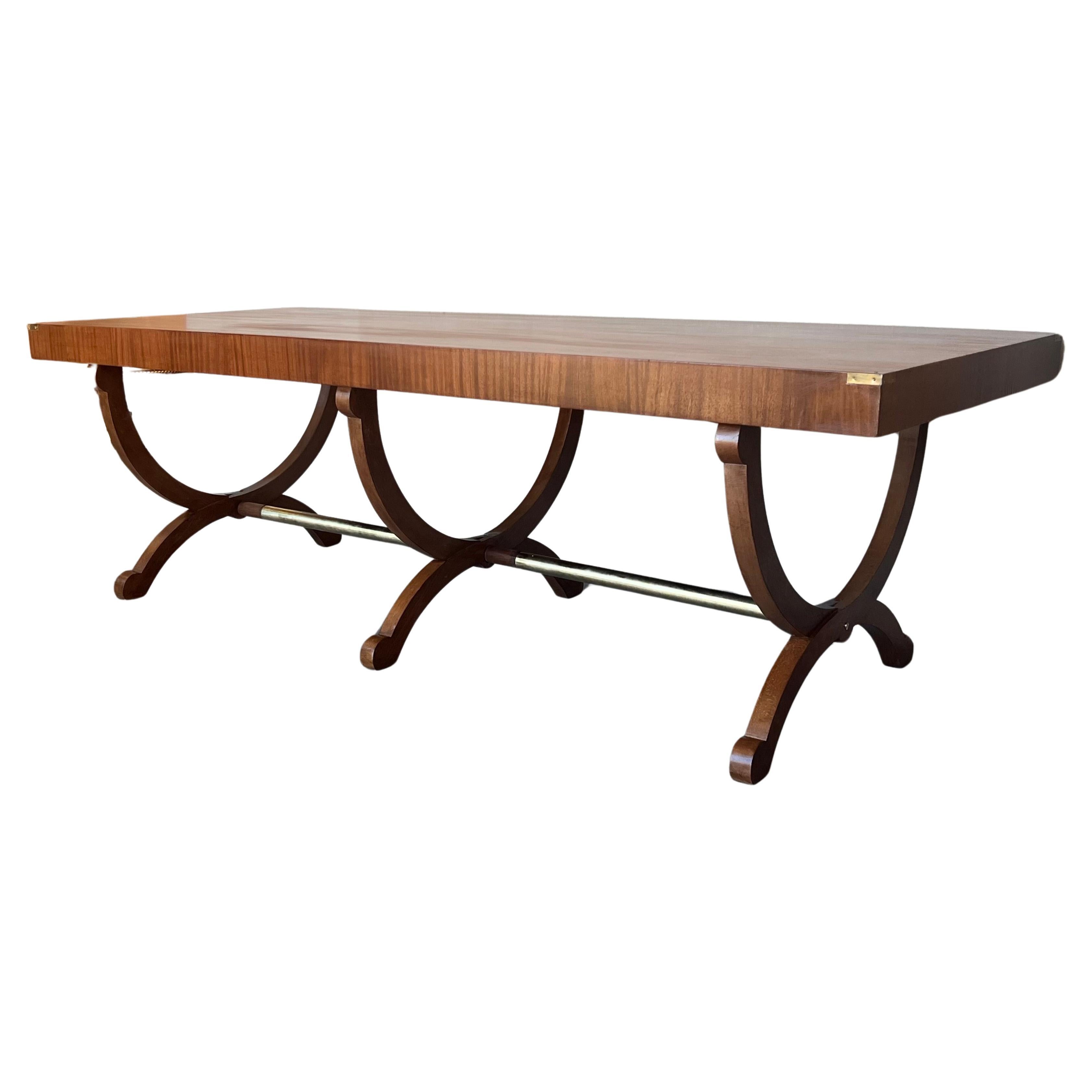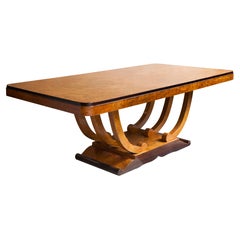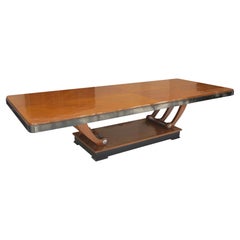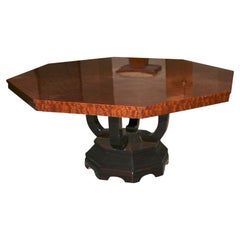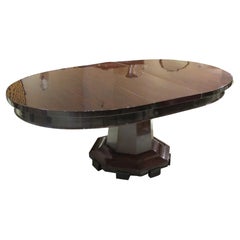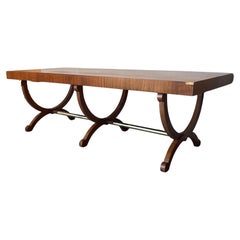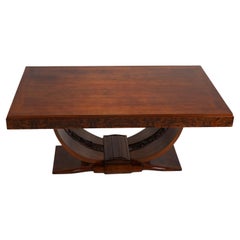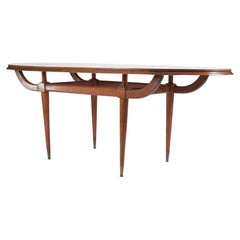Articoli simili a Dining Room Table, Style: Art Deco, ' 10 People', Year: 1920
Caricamento del video
Vuoi altre immagini o video?
Richiedi altre immagini o video al venditore
1 di 22
Dining Room Table, Style: Art Deco, ' 10 People', Year: 1920
20.757,22 €
Informazioni sull’articolo
Dining table Art Deco (Does not include glass)
Year: 1920
Country: French
Wood
Finish: polyurethanic lacquer
It is an elegant and sophisticated dining table.
You want to live in the golden years, this is the dining table that your project needs.
We have specialized in the sale of Art Deco and Art Nouveau styles since 1982.
Pushing the button that reads 'View All From Seller'. And you can see more objects to the style for sale.
Why are there so many antiques in Argentina?
In the 1880 – 1940 there was a grate wave of immigration encouraged by the periods of war that were taking place.
1st World War took place between 1914 and 1918
2nd World War took place between 1939 and 1945
The immigrants options were New York or Buenos Aires. Tickets were cheap and in Buenos Aires they were welcomed with open arms, as it was a country where everything was still to be done.
Argentina was the country of new opportunities, labour was needed and religious freedom was assured, in many cases the of the family travel first until they were settled and then the rest of the family members join them.
In the immigrant museum “Ellis Island Immigrant Building” in New York you can se the promotional posters of the boats that would take them to a new life.
Between the years 1895 and 1896, Argentina had the highest DGP (gross domestic product) per capita in the world according to the Maddison Historical Statistics index, this situation arose due to the large amount of food being exported to European countries, which were at war.
The Argentinean ships left the port of Buenos Aires with food, but they returned with furniture, clothes and construction elements, (it´s common to see this the old buildings of the historic neighbourhood of San Telmo, the beams with the inscription “Made in England)”, as well as many markets that were built in Buenos Aires, such us the San Telmo Market, whose structure was brought by ship and afterwards assembled in 900 Defensa Street.
With the great influence of European immigrants living in the country, the children of the upper classes travelled to study in France, resulting in the inauguration of “La Maison Argentinienne”, on 27th of June 1928, in the international city of Paris, which hosted many Argentinians that were studying in Frace.
It´s the fourth house to be built after France, Canada and Belgium, being the first Spanish-speaking one. Still in place today (17 Bd Jourdan, 75014, Paris, France). Many of the children of these wealthy families who attended international art exhibitions, museums and art courses abroad, took a keen interest in the European style. This is why Buenos Aires was at the time referred as “The Paris of South America”.
Between the years 1890 and 1920 more than a hundred Palaces were built on Alvear Avenue the most exclusive avenue in Buenos Aires. Today some of these palaces have been transformed into museums, hotels and embassies.
In the year 1936, the Kavanagh building was inaugurated, it was the tallest reinforced concrete building in South America.
During 1994 the American Society of Civil Engineers distinguished it as an “international engineering milestone”, and it´s now considered a World Heritage of Modern Architecture.
At the time was common to hire foreign architects such as Le Corbusier, who visited Buenos Aires/Argentina in 1929 and in 1948 he drew up the blueprints for a house built in La Plata City (which was declared a World Heritage Site).
In 1947, the Hungarian architect Marcelo Breuer designed “Parador Ariston” in the seaside city of Mar del Plata. After an Argentinean student at Harvard University convinced him to come to Argentina. He worked on an urban development project in the Casa Amarilla, area of La Boca.
The Ukrainian architect, Vladimiro Acosta, arrives in Argentina in 1928 and worked as an architect until que moved to Brazil.
Antonio Bonet, a Spanish architect who worked with Le Corbusier in Paris, arrives in Argentina in 1937, where he carried out several architectural works and in 1938 designs the well-known BFK chair.
Andres Kálnay, of Hungarian origin, made around 120 architectural masterpieces, among which the former Munich brewery stands out, he even made the furniture’s design.
The German architect, Walter Gropius, director of the Bauhaus, lived in Argentina, where he wrote articles for “Sur” magazine and founded in Buenos Aires, an architectural firm with Franz Möller, who was also an architect, where he built two houses.
At the same time several famous designers decided to immigrate to Argentina, among them we can find the well-known French designer, Jean-Michel Frank, who arrived in the country in 1940 and also worked for the Rockefeller family.
Special pieces were made, which were sold exclusively in the country, such as the well-known German company “WMF”, who sold their products by catalogue, which were chosen by the ladies of high society in the list of wedding gifts, as well as the pieces designed by Christofle.
The Swiss sculptor Alberto Giacometti, made special pieces for Argentinean mansions.
In 1904 the first Jansen branch outside Paris was established in Buenos Aires, as the Argentinean clientele demanded a large amount of furniture, from the end of the 19th century to the mid-20th century.
In 1970, the brand Rigolleau Argentina made pieces authorised by Lalique.
The brands Maple and Thompson also set up shop in the country.
The French plastic artist, Marcel Duchamp moved to Argentina in 1918-1919.
Glass signed Gallé, Charder, Leverre, Schneider, Muller and other French firms. They were bought in flower shops and were given to ladies with beautiful floral arrangements.
Some furniture manufacturers travelled to international fairs and bough the patterns to produce the furniture in Argentina, such as the furniture firm Englander and Bonta, who bought the patterns ins Italy.
It is worth mentioning that in Argentina we have the largest community of Italians outside of Italy, as it is estimated that 70 percent of the inhabitants have at least one Italian descendant, followed by Spanish immigrants.
The most Important furniture stores in Argentina:
Comte is founded in 1934 (under the direct management of Jean Michel Frank in 1940).
Nordiska (Swedish company established in 1934).
Churba in 1960, a company that brought foreign designers to present their furniture in the country:
Denmark: (Arne Jacobsen, Finn Juhl, Bender Madsen, Ejner Larsen, Poul Kjaerholm, Hans Wegner)
Sweden: (Hans Agne Jakobsson, Gustavsberg)
United States: (Herman Miller)
Finland: (Lisa Johansson, Folke Arstrom, Tapio Wirkkala, Alvar Aalto, Timo Sarpaneva)
Swedish Factory: (Orrefors)
Italy: (Littala, Vico Magistretti, Emma Gismondi, Gae Aulenti, Angelo Mangiarotti, Elio Martinelli, Gianna Celada, Angelo Mangiarotti, Mario Bellini, Carlo Scarpa)
Finland: (Olivia Toikka)
Plata Lappas (Lappas Silver): a goldsmith shop founded in 1887 in Argentina by Alcibiades Lappas of Greek origin.
In 2019, in Argentina took place “the Art Deco world congress”, in which we participated as hosts invited by Geo Darder, founder of the Copperbridge – Foundation, in which prominent people from all over the world attended to learn about Art Deco in Argentina.
Argentina currently has more than 100 Art Deco buildings and another 90 Art Nouveau buildings throughout the city of Buenos Aires.
Argentina is a country that has not been involved in many wars, which is why it has been a refuge for works of art and antiques from different periods of time, unlike European countries. That is way many collectors, museums and antique dealers from all over the world visit it, you should not miss the opportunity to visit this great country.
Laura Guevara Kjuder, architect.
- Dimensioni:Altezza: 79 cm (31,11 in)Larghezza: 240 cm (94,49 in)Profondità: 111,5 cm (43,9 in)
- Stile:Art Déco (Del periodo)
- Materiali e tecniche:
- Luogo di origine:
- Periodo:
- Data di produzione:1920
- Condizioni:Usura compatibile con l’età e l’utilizzo.
- Località del venditore:Ciudad Autónoma Buenos Aires, AR
- Numero di riferimento:Venditore: F-TO-3241stDibs: LU6785230634522
Informazioni sul venditore
5,0
Venditore professionale selezionato
Ogni venditore supera rigorosi standard di autenticità e affidabilità
Fondazione nel 1982
Venditore 1stDibs dal 2022
37 vendite su 1stDibs
Tempo di risposta standard: <1 ora
- SpedizioneRecupero del preventivo…Spedizione da: Ciudad Autónoma Buenos Aires, Argentina
- Politica di reso
Alcune parti di questa pagina sono state tradotte automaticamente. 1stDibs non può garantire che le traduzioni siano corrette. L’inglese è la lingua predefinita del sito.
Garanzia di autenticità
Nell’improbabile caso in cui si verifichi un problema con l’autenticità di un articolo, contattaci entro un anno per ottenere un rimborso completo. DettagliGaranzia di rimborso
Se il tuo articolo non corrisponde alla descrizione, è danneggiato durante il trasporto o non arriva, contattaci entro 7 giorni per un rimborso completo. DettagliAnnullamento entro 24 ore
Hai un periodo di tolleranza di 24 ore per annullare il tuo acquisto, senza necessità di fornire spiegazioni.Venditori professionali selezionati
I nostri venditori di livello internazionale devono aderire a rigorosi standard di servizio e qualità, garantendo l’integrità delle inserzioni.Garanzia miglior prezzo
Se scopri che un venditore ha pubblicato altrove lo stesso articolo a un prezzo più basso, applicheremo lo stesso prezzo.Consegna globale affidabile
La nostra rete di vettori leader del settore offre opzioni di spedizione specializzate in tutto il mondo, inclusa la consegna personalizzata.Altro da questo venditore
Mostra tuttoTavolo da pranzo, Stile: Art Deco, 1920 '8 Persone', Materiale: Wood
Tavolo da pranzo Art Deco
Anno: 1920
Paese: Francese
Legno
Finitura: lacca poliuretanica
È un tavolo da pranzo elegante e sofisticato.
Se vuoi vivere gli anni d'oro, questo è il ta...
Categoria
Vintage, Anni 1920, Francese, Art Déco, Tavoli da pranzo
Materiali
Legno
Tavolo da pranzo, Stile, Art Deco, 1920 '12 persone', Materiale, Wood
Tavolo da pranzo Art Deco
Viene consegnato rilucidato
Anno: 1920
Paese: Francese
Legno
Finitura: lacca poliuretanica
È un tavolo da pranzo elegante e sofisticato.
Se vuoi vivere gl...
Categoria
Vintage, Anni 1920, Francese, Art Déco, Tavoli da pranzo
Materiali
Legno
Tavolo, stile, Art Deco, '8 persone', anno, 1920
Tavolo da pranzo Art Deco
Anno: 1920
Paese: Francese
Legno
Finitura: lacca poliuretanica
È un tavolo da pranzo elegante e sofisticato.
Se vuoi vivere gli anni d'oro, questo è il ta...
Categoria
Vintage, Anni 1920, Francese, Art Déco, Tavoli da pranzo
Materiali
Legno
Tavolo da pranzo, Stile: Art Déco, Francia 1920, '8 Persone', Materiale: Wood
Tavolo da pranzo Art Deco
Anno: 1920
Paese: Francese
Legno
Finitura: lacca poliuretanica
È un tavolo da pranzo elegante e sofisticato.
Se vuoi vivere gli anni d'oro, questo è il ta...
Categoria
Vintage, Anni 1920, Francese, Art Déco, Tavoli da pranzo
Materiali
Legno
Tavolo da sala da pranzo Art Deco con due tavole di estensione, 1920 '12 persone'
Tavolo da pranzo Art Deco con due tavole allungabili
Viene rilucidato prima della consegna
Anno: 1920
Paese: Francese
Legno
È un tavolo da pranzo elegante e sofisticato.
Se vuoi vi...
Categoria
Vintage, Anni 1920, Francese, Art Déco, Tavoli da pranzo
Materiali
Legno
Tavolo da pranzo Art Deco "8 persone", 1920, Materiale: legno , Francese
Tavolo da pranzo Art Deco.
Anno 1920
Paese: Francese
Legno
Finitura: lacca poliuretanica
È un tavolo da pranzo elegante e sofisticato.
Se vuoi vivere gli anni d'oro, questo è il ta...
Categoria
Vintage, Anni 1920, Francese, Art Déco, Tavoli da pranzo
Materiali
Legno
Ti potrebbe interessare anche
Tavolo da pranzo o tavolo da sala in stile Art Deco degli anni '30
Questo tavolo è stato prodotto in Francia intorno al 1930 ed è un tavolo versatile che può essere utilizzato come tavolo da pranzo occasionale, tavolo da ingresso o scrivania. Il pi...
Categoria
Inizio XX secolo, Francese, Art Déco, Tavoli da pranzo
Materiali
Metallo
Tavolo da pranzo Art Deco vintage
Un tavolo in mogano in stile art déco che non mancherà di stupire i tuoi ospiti negli anni a venire. L'ampio piano d'appoggio offre spazio a sufficienza per qualsiasi cosa, dalle cen...
Categoria
Metà XX secolo, Art Déco, Tavoli da pranzo
Materiali
Legno curvato, Mogano
1875 € Prezzo promozionale
32% in meno
Eccezionale tavolo da pranzo Art Deco
Questo eccezionale tavolo da pranzo Art Déco, realizzato in ricco legno di noce, è un superbo esempio di design e artigianato dell'epoca. Il tavolo si allunga fino a 2,2 metri con l'...
Categoria
Metà XX secolo, Francese, Art Déco, Tavoli da pranzo
Materiali
Noce
Tavolo da pranzo in stile Art Deco della metà del XX secolo
Acquistato in una vendita immobiliare a Buenos Aires e importato dall'Argentina, questo tavolo in legno della metà del XX secolo in stile Art Déco può essere utilizzato anche come ce...
Categoria
Metà XX secolo, Francese, Art Déco, Tavoli da pranzo
Materiali
Legno
Tavolo da pranzo/biblioteca in mogano francese Art Deco
Un grande tavolo che richiama il periodo deco grazie al suo design semplice ma sofisticato. Il piedistallo inclinato offre un'eleganza senza tempo, completata dal mogano lucido e dai...
Categoria
Inizio XX secolo, Francese, Art Déco, Tavoli da pranzo
Materiali
Ottone
Tavolo da pranzo Art Deco, 1920 circa
Un elegante tavolo da pranzo con una base a forma di tulipano che poggia su uno zoccolo rettangolare curvo. Il piano del tavolo rettangolare, con angoli arrotondati e un bordo sempli...
Categoria
Vintage, Anni 1920, Francese, Art Déco, Tavoli da pranzo
Materiali
Noce
